If there’s one thing that is constant about social media, it’s change.
So many things influence the way we behave on social media: technology, social changes, economy, and politics. All of them are changing at a rapid speed, so you can imagine how volatile the social media world is.
This makes predicting trends for a year ahead quite difficult. However, there are tendencies that stick around and affect the industry in a major way for a long time. For example, influencer marketing has been winning the hearts of social media marketers and the pockets of consumers for a couple of years now, and the ephemeral content, even though it has been around for a while, got a significant boost with Instagram’s investments put into the Stories feature.
Considering these points, I present to you the eight social media trends of 2019. These are the tendencies that take their roots in the current cultural zeitgeist, technological development, and social platforms’ respective strategies, and are expected to take over social media this year.
1. Social listening
Social listening is not a new thing by any means, but the way we apply social listening is changing right now. In the past years, social listening was a way to manage brand mentions and reputations for big brands like Apple or Hilton. However, two things happened that altered the social media listening industry:
- Social media monitoring tools have become more evolved, with new sources of data, new features, etc being added constantly.
- The tools became affordable not just for huge corporations, but for mid-sized and small businesses, local businesses, and startups as well.
How did this affect social listening strategies? Well, nowadays, the new features and data sources allow going beyond basic brand monitoring. You can use social listening for social selling, SEO, and customer care to name a few.
If I’d have to point out one area where social listening could really change the current marketing landscape, I’d go with sales. Social selling is a unique tactic that gives you an opportunity to engage with people who are seeking services and products in your industry directly.
One tool in particular even added a specific feature dedicated to social selling called Awario Leads.
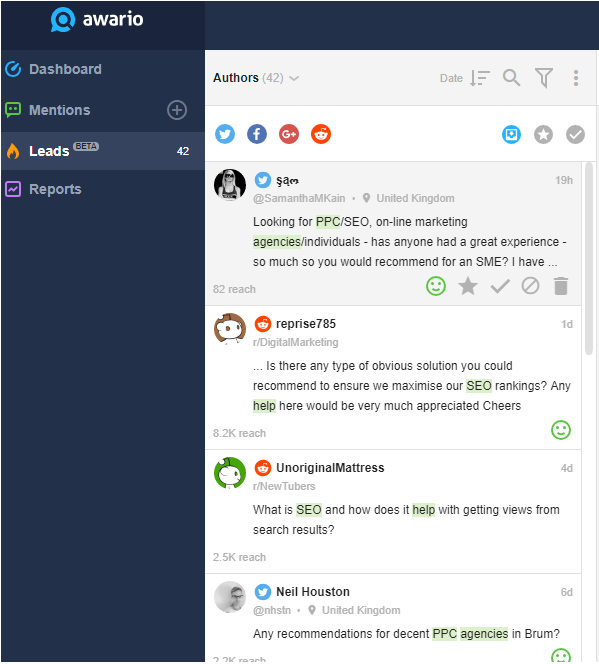
For now, this tactic is extremely underused, but we can expect to see more and more brands taking on social selling this year.
2. Buying on social
Social selling is one thing, but what if you could choose and order a product without even leaving the social media app?
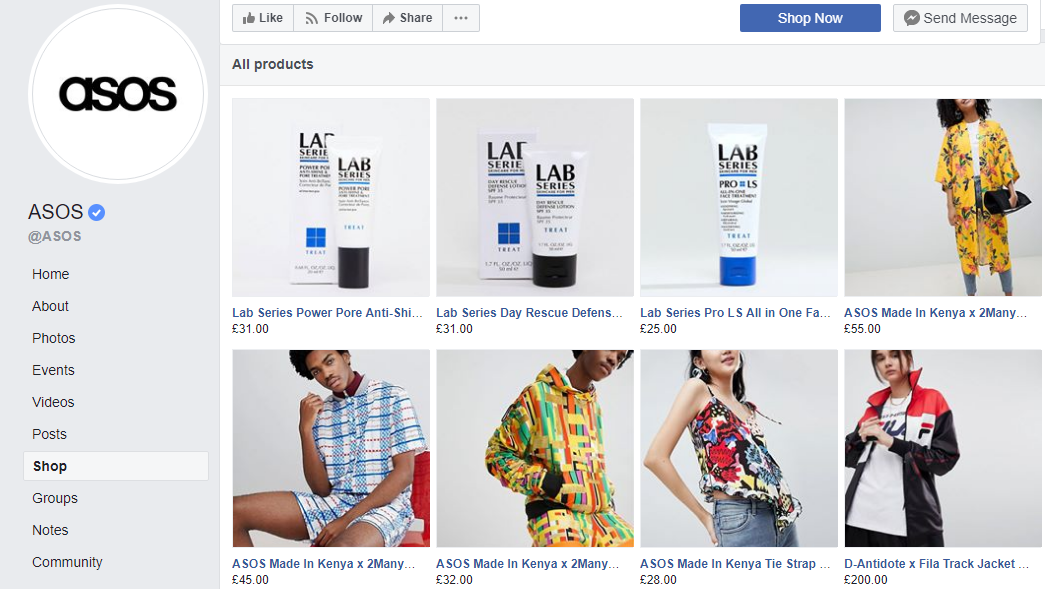
To be fair, it’s not a new thing, Facebook already allows users to buy products from brands’ pages in their ‘Shop‘ section. They also have a Marketplace feature launched way back in 2007 which is an alternative to Craigslist, a platform where individuals can sell or exchange mostly second-hand items.
In 2019 we will see more social media companies opening up their platforms for ecommerce. It would be the next logical step for companies which already offer brands a wide range of features for advertising, like YouTube or Instagram. In fact, one of these might be already working in that direction.
Last September, The Verge reported that Instagram might be working on an ecommerce app. According to the article, the app will let users browse collections of goods from merchants that they follow and purchase them directly within the app.
Surely, the app is not an additional feature to Instagram but rather a stand-alone entity. However, this indicates Instagram’s understanding and interest in implementing e-commerce in their product (which is only natural considering that Facebook owns Instagram).
3. Transparency
Social media data has become essential to any marketing strategy, hence social listening is on this list. However, this past year proved just how little knowledge we as a society have of the scope and impact of social media data collected on a daily basis.
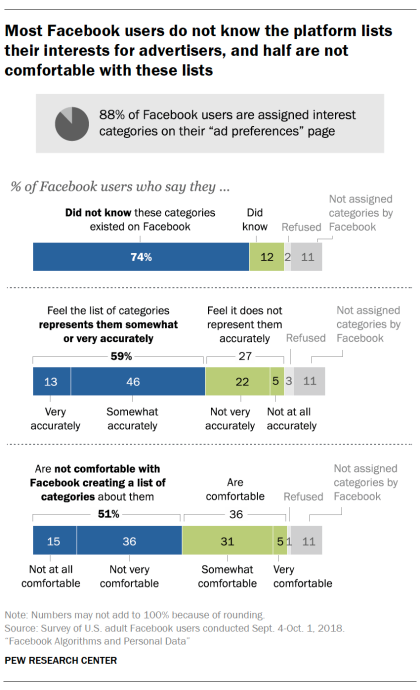
Last year was marked by an array of privacy scandals, with Cambridge Analytica being the most prominent one. However, Facebook wasn’t the only one who suffered, Twitter, YouTube, and even Reddit reported at least one security breach last year.
However, let’s not diminish Facebook’s role in this regard, they seemed to have one PR nightmare after another. This probably prompted Mark Zuckerberg to make a special New Year’s resolution for 2019 to organize a series of public discussions dedicated to how Facebook influences society.
That will be only one of the initiatives dedicated to bringing more transparency into the world of social media companies. Data is one of the most important resources in social media marketing, and ethical collection, as well as unbiased evaluation of it, will be a major priority for companies this year.
Our century is marked by brands developing personalities for themselves and building relationships with their audiences. According to this study by Sprout Social, millennials are expecting more transparency from brands than politicians or friends and family. Gaining the trust of the audience will become the focus of social media platforms’ strategies.
4. Live streaming
Powered by social media algorithms, pivoting to video content has been a trend for a while now. This year, however, live streaming is the new black.
Social streaming favors in-the-moment content, another trend that has been taking over social media for a while with Instagram Stories, Snapchat, and, most recently, Facebook stories. According to this Facebook report, daily watch time for Facebook live broadcasts grew four times over the course of a year.

You can use live streaming to present a new product, change the narrative during a PR crisis, or introduce a collaboration with an influencer.
What makes live streaming so special is the ability to create space for an actual dialogue with your customer in real time. Your viewers feel like they are in the middle of a natural conversation, and you’re speaking directly to them. It wins over highly produced video content because of its authenticity, the thing every marketer is trying to accomplish.
5. Private communities
2018 saw a trend of communication migrating to private channels.
More and more interactions occur in Facebook groups and private communities rather than on public pages, which is favored both by algorithms and people (unless these people are social media managers). Moreover, social media platforms keep adding new features to simplify the curation of private groups on top of integrating messaging features in their apps.
On Instagram, turning your growing Instagram account private creates a sense of exclusivity and urgency encourages people to follow, as described in this article by the Atlantic. Private groups and accounts make you feel like a part of an exclusive community, and who doesn’t want that?
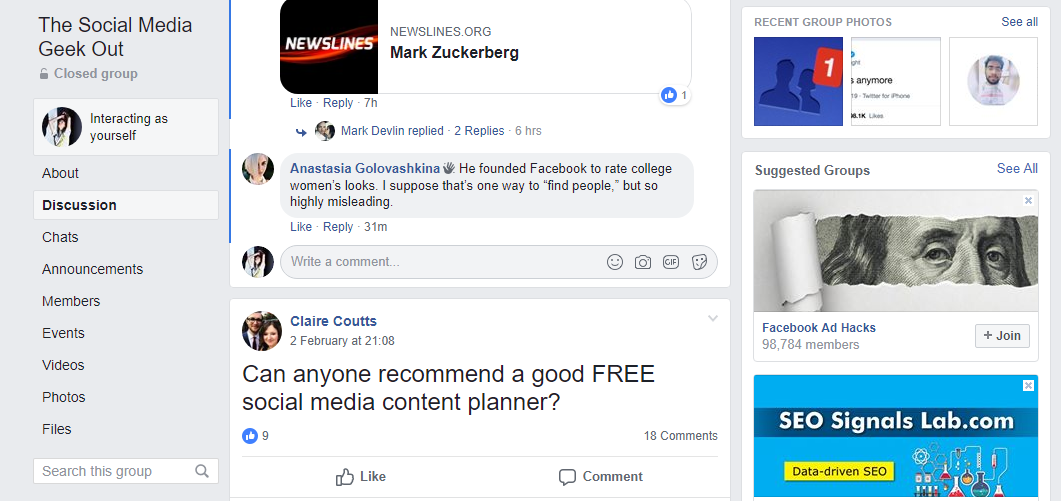
Consider creating a private community for your brand, for example, a group on Facebook or LinkedIn. This will give your users an opportunity to not just communicate with you but also with each other, which contributes to building a strong community and encouraging brand advocacy.
6. Messaging
The most private communication channel is, of course, direct messaging. And for the last few years, brands have been engaging with customers through DMs and personal messages on social.
For now, brands are mostly using messaging apps and DMs for customer service purposes. But there’s untapped potential to create personalized, automated communication that’s even more effective than email.
This year, messaging will become a meaningful part of every social media strategy. Moreover, brands will finally embrace messenger automation. A study conducted by Relay revealed that out of 1000 trending B2B companies on Crunchbase, only 0.5 percent of the companies had a chatbot.
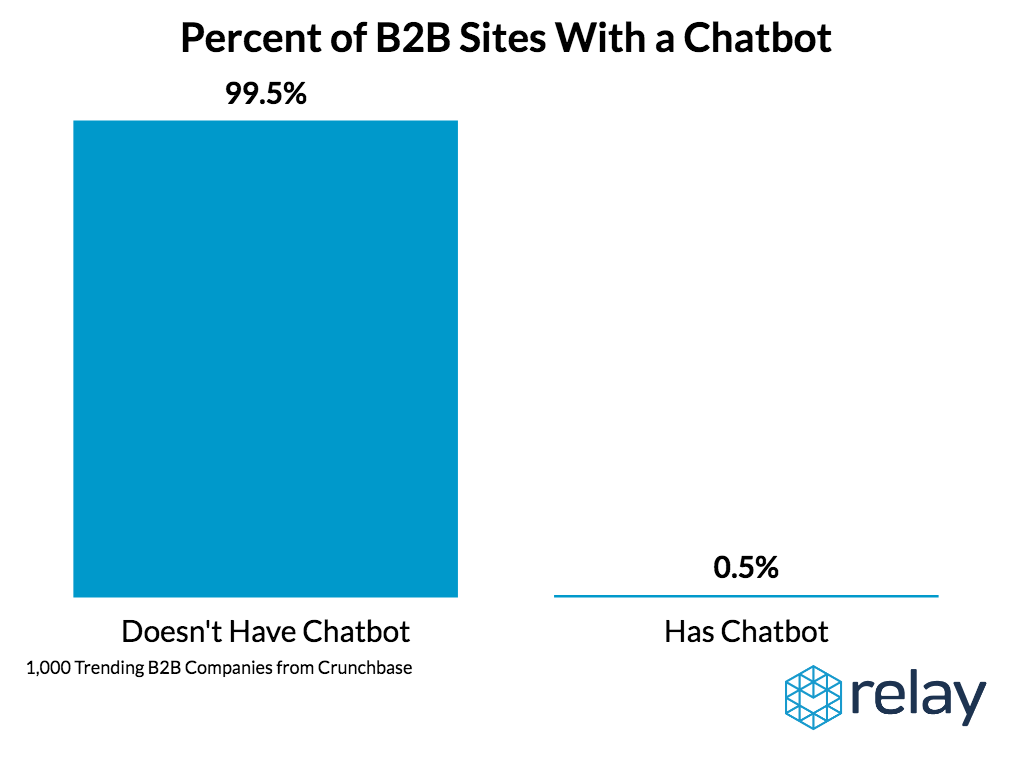
Chatbots could make messenger marketing the new email marketing, the open rate for messages is much higher than for emails, and messaging itself is seen as a more casual and personal way of communication.
Chatbots aren’t perfect yet, and people still prefer to converse with a human. However, as chatbots become more sophisticated and use more natural language, they will become necessary. You need to figure out which part of your marketing strategy could benefit from them.
Integrating eCommerce functions could also be beneficial for messaging apps. This is not the new idea if we remember WeChat, but it hasn’t been explored yet in the Western part of the world.
7. Personalization
Chatbots and messaging can also be a part of a comprehensive personalization strategy. 2019 will be the year when personalization powered by AI takes over marketing.
Considering the vast amount of personal information currently available to social media companies, it has become extremely easy to obtain insights into all kinds of information about your customers. Content consumed, purchase history, clicked links, social media interactions, and even personal messages. All this and more can be used to create a laser-targeted marketing campaign just for you.
However, some consumers may feel uncomfortable with how personalization is currently implemented in marketing. Brands need to find the fine line between being helpful and outright creepy.
One way to do this would be combining personalization and other types of marketing: influencer marketing, personalizing your messaging communication (beyond using first names), and so on. Take an example from Airbnb, which uses information about your past and upcoming trips to craft personalized traveling recommendations.
8. Augmented reality (AR)
AR can be used in a plethora of ways, from creating filters dedicated to certain events to actually implementing your product in videos or photos to let customers try it on.
At its F8 developer conference last year, Facebook announced that it was testing AR ads. In your timeline, they look like ordinary Facebook Ads but with a ‘Tap to try it on’ button that lets you try products on virtually with the help of camera filters.
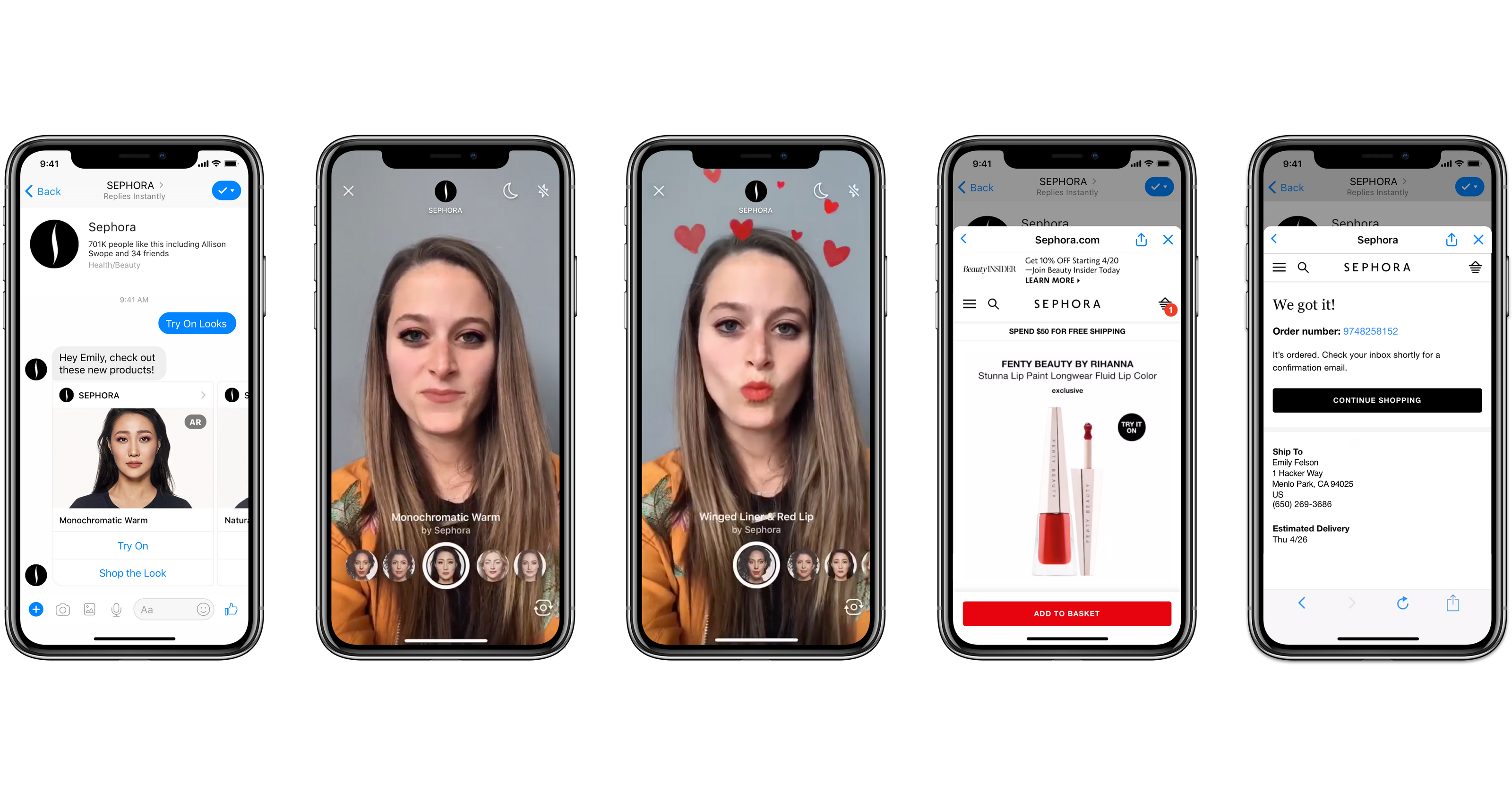
AR could be the solution for those who don’t like online shopping and prefer to test a product before buying. If social media platforms successfully implement this technology on a wide scale first, they will become an even more attractive platform for advertising compared to digital space.
What you need to do in 2019
As you can see, none of these trends are coming at you completely out of the blue, most of them are a logical development of social media platforms’ strategies or the way ordinary users behave on social media.
So this year, it’s time to become an early adopter and try something new, be it a social listening tool or a messenger bot. In 2019, make sure you:
- Collect and analyze social media data to guide your marketing decisions
- Apply new technology to your social media strategy
- Stay authentic and personal
You will undoubtedly see a boost in your social media ROI.
Got any unique social media strategies chalked out for 2019? Share your thoughts in the comments.
The post Eight social media trends that will make 2019 appeared first on Search Engine Watch.
from Search Engine Watch https://ift.tt/2IXAHyp

No comments:
Post a Comment